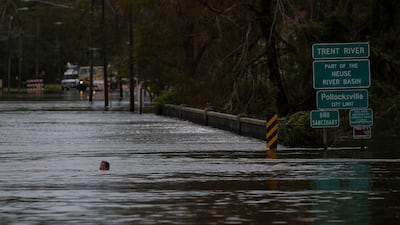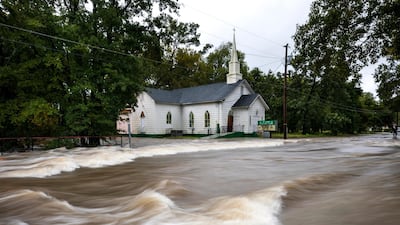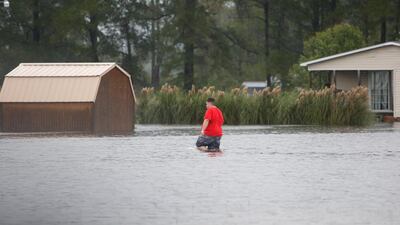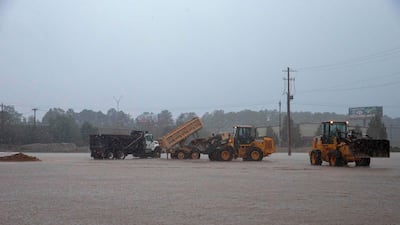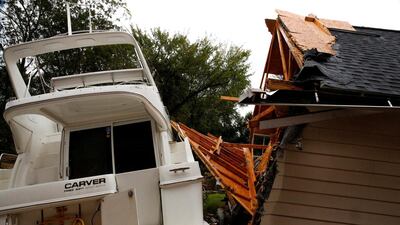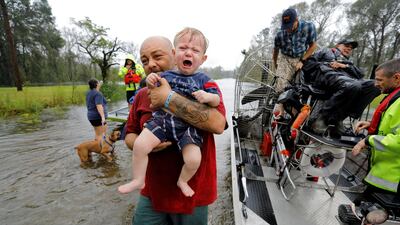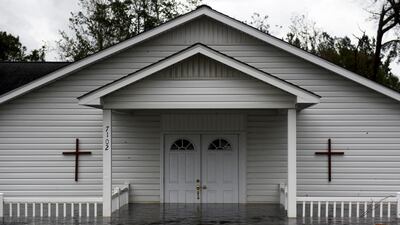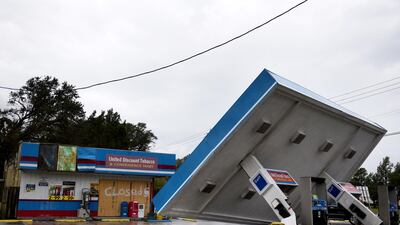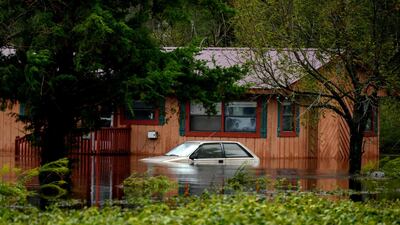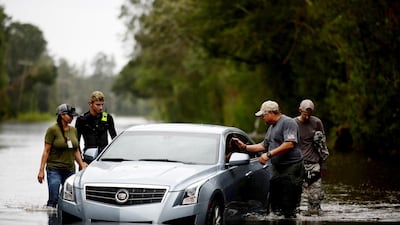Catastrophic floods raised the threat of dam breaks and landslides across the southeastern United States on Monday, prolonging the agony caused by a killer hurricane that has left more than a dozen people dead and billions of dollars in damage.
Downgraded to a tropical depression, Florence slowly crawled over South and North Carolina, dumping heavy rain on already flood-swollen river basins that authorities warned could bring more death and destruction.
The National Weather Service Weather Prediction Center warned on Sunday night of "heavy and excessive rainfall over the next couple of days".
There is an "elevated risk for landslides" in western North Carolina and southwest Virginia, as well as danger of "catastrophic and life-threatening flash flooding" in parts of the Carolinas, it said.
"A lot of people have evacuated already," said Denise Harper, a resident of Grifton, a small North Carolina town threatened by rising water levels in a nearby creek and the River Neuse. "It's worrying to watch the water slowly rising."
At least 15 people have died since Florence made landfall on Friday as a Category 1 hurricane near Wrightsville Beach, 10 in North Carolina and five in South Carolina. There are reports that the number has risen to 17.
"Unfortunately we've still got several days to go," Brock Long, administrator of the Federal Emergency Management Agency, told Fox News.
Mr Long said more havoc lays ahead as the storm broadens its geographic scope over regions deeply saturated with water.
_____________
Rainfall tracker
_____________
Of particular concern were the risks to dams, already stressed by heavy rainfall from a tropical storm earlier in the month, he said, urging citizens to heed official warnings about what was now a "flood event."
"What we have to focus on are there any dams that are potentially going to break."
"People fail to heed warnings and get out or they get into the flood waters trying to escape their home. And that's where you start to see deaths escalate," he told CBS News.
"Even though hurricanes are categorised by wind, it's the water that really causes the most loss of life."
North Carolina Governor Roy Cooper earlier told reporters "the strongest storm bands are dumping two to three inches of rain per hour" over regions that had already received up to two feet of rain.
"That's enough to cause flooding in areas that have never flooded before until now. The risk is growing as well in the mountains, where rains could lead to dangerous landslides," he said.
A woman and her baby were among the storm's first casualties when a tree fell on their house.
Others killed included three who perished "due to flash flooding and swift water on roadways," according to the Duplin County Sheriff's Office, and a 61-year-old woman who died when her car hit a downed tree.
At least two people died from electrocution while attempting to connect their generators, while one couple died of monoxide poisoning from running their generator indoors.
Even as some residents began returning to their homes, officials warned of a long road to recovery ahead.
US Coast Guard Commandant Admiral Karl Schultz told ABC 28 aircraft had been deployed as well as 35 "shallow water rescue teams".
Some 2,800 North Carolina National Guardsmen were actively aiding rescue and relief efforts Sunday with another 1,000 on standby.
_____________
Storm in numbers
Heavy rains: Nearly 34 inches of rain fell from Thursday through Sunday in Swansboro, on the North Carolina coast, according to the National Weather Service
In the dark: About 575,000 outages, mostly in North Carolina
Protected: About 15,000 people in shelters in North Carolina
Grounded: More than 2,400 flights cancelled
Storm losses: Mayor of New Bern, North Carolina, says his city has 30 roads still unpassable, 4,200 homes and more than 300 commercial buildings damaged, 6,000 customers without power and 1,200 residents in shelters
Evacuations: Tens of thousands ordered out of communities along North Carolina's steadily rising rivers, while over 2.4 million people in southern China's Guangdong province were warned to escape Typhoon Mangkhut
To the rescue: More than 1,000 search-and-rescue personnel with 36 helicopters and over 200 boats were working in North Carolina
Washed out: Two US government river monitoring gauges stopped transmitting after waters reached 6.5 metres and seven meters, and more gauges were expected to fail as rivers continued rising
_____________
In pictures
___________
Read more:
Twin tales of extreme weather are a stark warning
Historic rainfall leaves US at risk of flooding following Florence Storm
Typhoon Mangkhut makes landfall in China as Philippines death toll spikes

